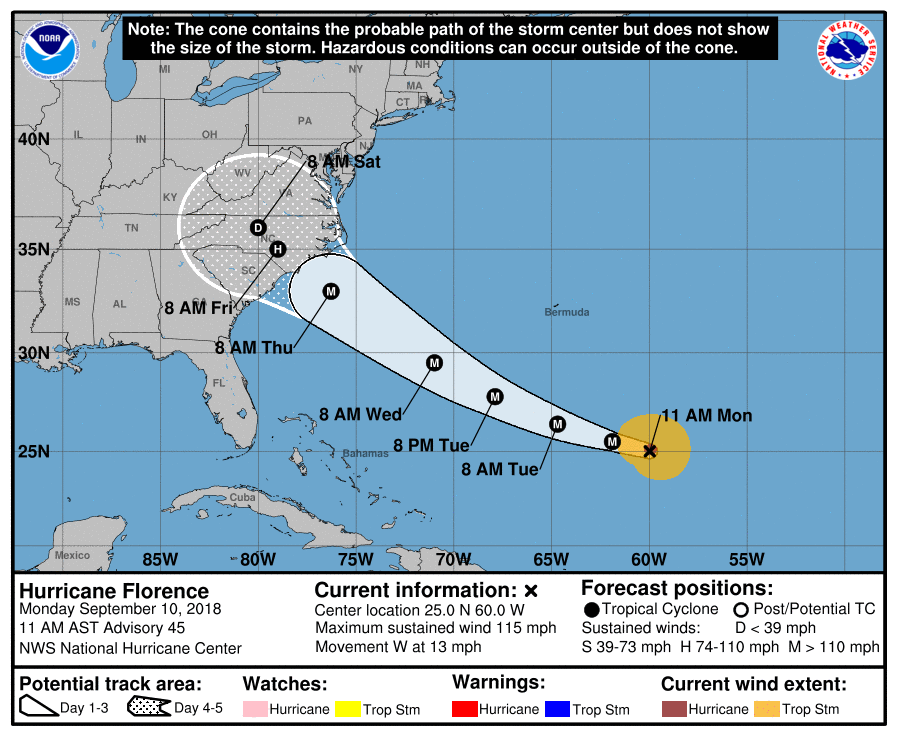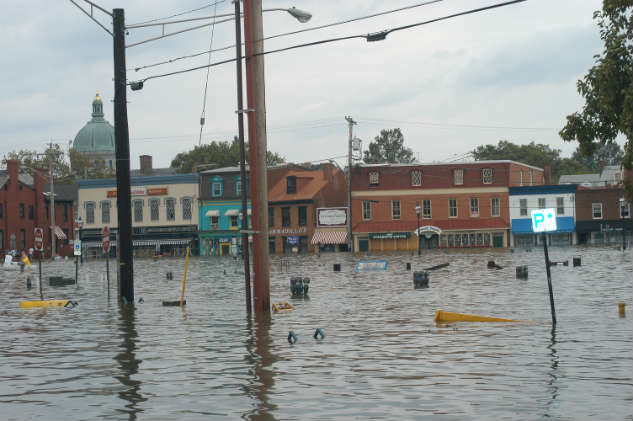What you need to do to prepare for a hurricane
Whether or not Hurricane Florence will hit the East Coast of the U.S. is the hot topic of the hour... we could argue our thoughts on it, but really, all we need to know is that the U.S. Navy is moving boats down in Norfolk; the Naval Academy is hauling boats in Annapolis; even the governor of Maryland has declared a state of emergency in advance of this storm and potential storm surge. It's time to make sure your boat will be safe, too, so here are some Hurricane Florence boat prep ideas... or really, ideas for any hurricane if you're a boat owner.
We'd like to thank our friends at Annapolis Harbor Boat Yard for sending out these tips by email and then posting it to its Facebook page:
"As you can imagine, we watch the weather extremely closely, and we have been watching the potential for hurricane Florence to affect our area. Currently, the path appears to be very similar to Isabel during which our area sustained significant flooding as well as sustained high winds. This caused significant problems for a number of people and a lot of property. The surge is our real concern. During Isabel, many vessels were damaged due to an inability to access the docks and adjust lines.
We are starting our hurricane haul-out preparations and schedule for hauling. If you are interested in hauling and storing with us during the storm please contact the office at your earliest opportunity. We are taking this storm very seriously as the projected path is showing the storm coming closer than we would like at this time.
Protecting your boat is important to us. In the event this storm affects the bay we suggest the following as a minimum to prevent loss and damage if you choose not to haul out:
- Add secondary dock lines to your boat
- Add chafe protection to your existing and secondary dock lines.
- Remove canvas
- Remove all items that are not strapped down (tender fuel cans, cockpit and other cushions, tenders etc.)
- Remove headsails and storm sails (for sailboats)
- Remove mainsails that are not 100% retained either in the mast or in the boom (for sailboats).
- Either remove tenders from the davits or secure them with the drains open to allow rainwater to drain and lash to prevent swinging.
- Add extra fenders in potential rub areas
- Secure all hatches, dorades, and portholes
- Clear all drains of debris
- Ensure bilge pumps are 100% operational
- Test batteries for load to ensure bilge pumps can operate for extended periods without power
- Monitor tidal surge to prevent issues with dock lines for both high and low tides
No matter what happens please remember to be safe. No boat is worth losing fingers, hands, toes, etc. Boats can be repaired. Hands, feet, arms, and legs are a lot harder to fix." ....Well said, Annapolis Harbor Boat Yard! Thanks for the great tips.
Find more ideas at BoatUS on hurricane preparation.






